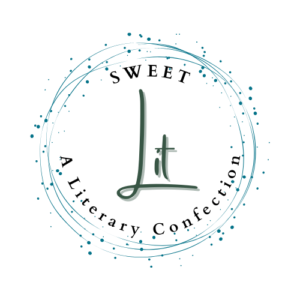Chelsea Biondolillo is an essayist, teacher and technical writer. Her latest work, The Skinned Bird, is a collection of essays that examine personal experiences with striking clarity and depth. Below, Chelsea expands on her usage of creative tools to weave memories, self-meditations, and precise imagery to build a space where her readers can learn along with her how to sing, how to love, and how to fly. The Skinned Bird will be available May 1st, 2019.
What made you decide to use birds and the language/song acquisition process as a storytelling tool in this book?
I learned about the stages of song acquisition in my ornithology class in grad school, but didn’t write about them until a couple of years later. At the time, I was having a crisis about what my immediate future would look like, having failed to find a permanent job or to finish a book after school. In the hopes of having a somewhat peaceful place to write for a couple of months while staving off the inevitable (which was moving back in with my parents), I’d moved into this guy-I-was-dating’s house, and he’d gone from being a doting suitor to a controlling jerk almost immediately. He reminded me of my biological father in dozens of ways, so one day while he was out of town, I called my mom to ask her to clarify some stories I half-remembered hearing as a kid about her first marriage. I originally thought the essay I was writing was just about them, but that’s why I love writing essays, because after a few edits there were more hints at my own crummy situation.
As far as the birds themselves… I have known a bit more than average about birds since I was a kid. When I was teaching myself to be a journalist, birds were a handy subject because I could easily observe them without expensive equipment (beyond a good field guide and pair of binoculars). There are tons of research papers about bird biology, bird behaviors, bird ecology, and the bird experts I’ve met have nearly all been very approachable, interesting people. I once called a man to talk to him about a grad school paper on vultures he’d written nearly thirty years ago and we spoke for over a half an hour—he didn’t have an answer for me, but he had observations that he still remembered and still cared to share.
In the section titled, “Safari,” you really incorporate various animals as a key element. How would you describe your relationship with nature? Why did you decide to use nature as one of the main motifs in this book?
Animals show up often in my writing for two reasons, I think, and the first is that I was often a lonely kid and animals were accessible to me in a way that children my own age weren’t always. The flash essay, “Safari Club,” is set at a restaurant of the same name (recently torn down) in the small town where my grandparents lived my whole life. It was full of hundreds of taxidermy animals, all shot by one man: Glen E. Parks. I was fascinated by them as a kid, and how close I could get to them—I could touch the walrus whiskers and pet the musk ox trophy, I could press against the glass right next to the tiny antelopes with giant eyes. The creepiness of the place didn’t occur to me until much later, and by then I considered it campy more than anything—though Parks excesses do not charm or interest me like they did when I was a kid.
The other reason animals show up is not unlike the reason they show up in fairy tales or Aesop’s fables, or in so many idioms: sly as a fox, wise as an owl. Sometimes, it is easier to talk about our weaknesses and shortcomings (and triumphs) from just enough remove to lessen some of the burden of responsibility they can represent. Or, said another way, sometimes it is easier to be like something else, for all the possibility it contains in the negative—e.g.: I may be like a magpie when it comes to collecting useless junk, but at least I don’t collect junk the way my grandmother did, which was clearly symptomatic of a hoarding problem. I use an extended bird metaphor throughout The Skinned Bird, even though at different times the metaphor fails, because though we are sometimes like birds, ultimately we aren’t birds, and that can be a relief.

The essays in the “Kick Ball Change” section center o women in your family and the connection between them. How would you describe that connection?
It’s complicated. My mother was willing to do just about anything to avoid moving back in with her mother, and I know very well that feeling—though the two homes in question couldn’t be more different from one another, there’s nothing quite like having to give up your own rules of engagement to live under another’s. And now I live in my grandmother’s old house! (It’s much less messy now that it’s mine.) My mother and grandmother (and I) share many similarities. Besides a strong shared streak of creativity, we were all heavy readers and collectors of things most don’t find particularly valuable. My art-making and writing is very much the result of their influences and I’m grateful for that. My worries about my weight, my fear of being disliked—these also are the result of their influence, and I’d give those gifts back if I could.
In Part II: The Silent Stage, you include a section called “The Story You Never Tell.” Why did you choose to include this story, but block it out with large images of shells? Is there a reason that you chose photos of shells to cover the text?
Rather than prescribe how any one reader ought to approach that piece, I’ll say that generally, in the natural world shells have a variety of functions: armor, home, protection. In this essay, they also serve as an obstruction. They are in the way.
By obscuring nearly all the text, obstruction becomes the content, instead of words. I was inspired here by artists and writers who use different kinds of redaction and omission in their work–Salvador Plascencia’s People of Paper has a character whose mind cannot be read, and so when the omniscient narrator passes over him, there’s a big black box on the page. In Terry Tempest Williams’ When Women Were Birds blank pages inform the narrative, standing in for years of untold stories. In Mohamedou Ould Slahi’s Guantánamo Diary and memoirs of war, the text is sometimes redacted by the heavy hand of censorship. There are, maybe, as many ways to not-tell a story as reasons one might prefer not to, and here, I wanted to explore what happens to the experience of reading when access to the text is out of the reader’s control.
Your use of footnotes to incorporate quotes in your pieces as footnotes and excerpts is creative and unique—what led to your decision to incorporate other artists’ and writers’ words in this creation? How did you choose which quotes would fit the best with what you were writing?
My first use of quotes was in a series of drawings and collages I did, several years after I’d graduated from art school. In the first collage, I used song lyrics and lines from favorite poems and filled a page with them, layered one on top of another, in different shades of gray felt pens, until you could only read a word here or there. I collaged pencil drawings, photo transfers, into a mash-up of my work and the work of others. I thought of this layered image: my drawings of master drawings, my photos of an artist’s sculpture, my handwriting but someone else’s poem, as a kind of conversation. As far as the quotes I use in my current essays—I usually start with a pile of “collage” material built up from researching a topic. And then try out different elements on the page, and in relation to the other elements, to see which spark the strongest connection for me.
In the case of “Phrenology” which includes a lot of different quotes, my original plan had been to write an essay about women in science. I’d spent weeks executing all sorts of Google searches, several pages deep, with different combinations of women + scientific words, like women in geology, women astrophysicists, etc. These led me to books on topics as wide ranging as the Mt. St. Helens eruption, women executed in the electric chair, and mathematical equations from the Harvard “Computers” (women tasked with completing astronomical equations). Eventually, I had all these pieces, but after several rounds of revision—that essay has been overhauled more than any other I’ve worked on—the text focused more on my own experiences with science, and the quotes and collaged statements haunt the periphery.
Hypothetically, if you could become any type of bird, which type of bird would you be? Why?
I am enchanted by birds, but I like my thumbs too much to want to be one. What I love most about birds is their diversity and adaptability. Humans don’t occur naturally on every continent, but birds do. They can adapt to our habits, but don’t always choose to. They are also our closest link to dinosaurs—and if you get a close look at the talons of a condor, it’s easy to see the dinosaur still in them. When I lived in Ucross, Wyoming for one long spring, there were Sandhill cranes nesting just a few dozen yards from my bedroom window. Every morning I would hear their eerie calls (https://www.xeno-canto.org/372031) and once, they were joined by a crowd of red-winged blackbirds (https://www.xeno-canto.org/439853). I listened to the birds and wind across the plain, and nothing else for several long minutes and thought, “This sound is millions of years old. This is what the Cenozoic could have sounded like.



